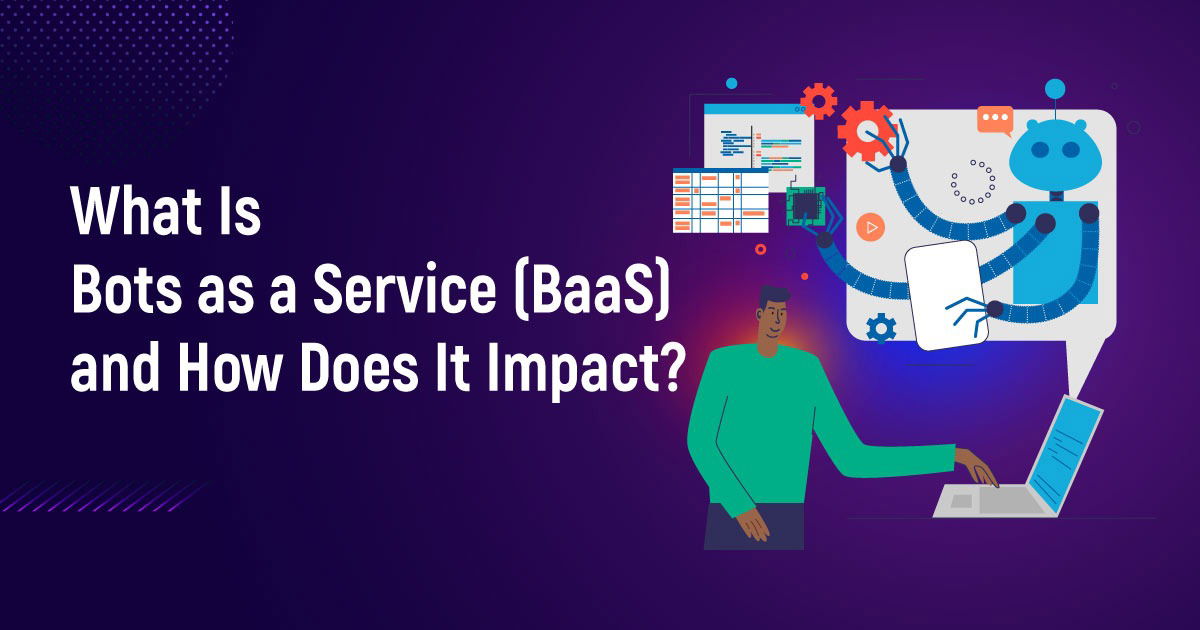Automation is key to business efficiency and security in today’s rapidly evolving digital environment. An exciting development in this area is Bots as a Service (BaaS), which uses automated services to improve cybersecurity measures, streamline operations, and provide security mechanisms to protect against ever-growing cyber threats.
Understanding Bots as a Service (BaaS)
Bots as a Service (BaaS) refers to the delivery of services over the Internet, enabling businesses to deploy bots for various tasks without requiring extensive design or development This model is the broader ‘as a service’ trend, reflecting the shift in cloud-based solutions and third-party service providers.
Types of Bots in BaaS
BaaS includes bots designed to address cybersecurity needs:
Monitoring bots:
These bots continuously monitor network traffic and user behavior, detecting unusual activity and potential threats in real-time.
Detection bots:
These bots use AI and advanced machine learning algorithms to analyze data to find patterns of cyber threats such as malware, phishing attempts, and intrusions.
Response bots:
Once a threat is detected, response bots can do things like automatically isolate affected systems, block malicious IP addresses, and alert the security team.
Benefits of BaaS
Enhanced Security: By leveraging bots that work 24/7, BaaS provides constant monitoring and faster response to threats, dramatically increasing organizations’ level of security.
Cost:
BaaS eliminates the need for capital investments in hardware and software. Companies can access incredible bot capabilities on a pay-as-you-go basis, reducing operational costs.
Scalability:
BaaS solutions are highly scalable, allowing enterprises to customize service levels to suit their needs. This flexibility is beneficial for growing organizations and changing demands.
Efficiency and Speed:
By automating repetitive security tasks, IT teams can concentrate on the thoughtful deployment of systems. A bot can process and analyze more information faster than human search engines, providing timely insights and actions.
Use Cases of BaaS in Cybersecurity

Threat Detection and Mitigation:
Bots monitor the network for suspicious activity and take actions to neutralize the threat, reducing the risk of a breach.
Vulnerability Management:
Bots routinely scan systems and applications for vulnerabilities, and ensure they are patched and up-to-date.
Incident Response:
When a security incident occurs, response bots can quickly isolate affected areas and initiate recovery protocols, reducing damage and downtime.
Challenges and Solutions of BaaS
Although BaaS has many advantages, it also has drawbacks, including the possibility of abuse and reliance on outside suppliers.
These concerns can be addressed by: implementing strong security measures:
-
Use secure connections, strong authentication methods, and regular audits to protect bots and data.
-
Choose a reputable provider: Work with trusted BaaS providers with a proven track record in security and reliability.
-
Continuously monitor and progress: Constantly monitor bot performance and implement progress to stay ahead of emerging threats.
Future of BaaS
The future of BaaS appears bright, particularly given the growing demand for automation. Integration of AI, machine learning, and other cutting-edge technologies is expected to enhance bots’ capabilities even further. The goal is to protect businesses in an increasingly complex digital environment by providing the most effective and efficient cybersecurity solutions possible.
With its potent tools to boost security, effectiveness, and cost-effectiveness, Bots as a Service (BaaS) is completely changing the cybersecurity landscape. By implementing BaaS, organizations can maintain organizational continuity of care, respond to threats more quickly, and have higher overall security. BaaS will develop further in addition to technology, providing more comprehensive solutions to safeguard companies in the digital era.









